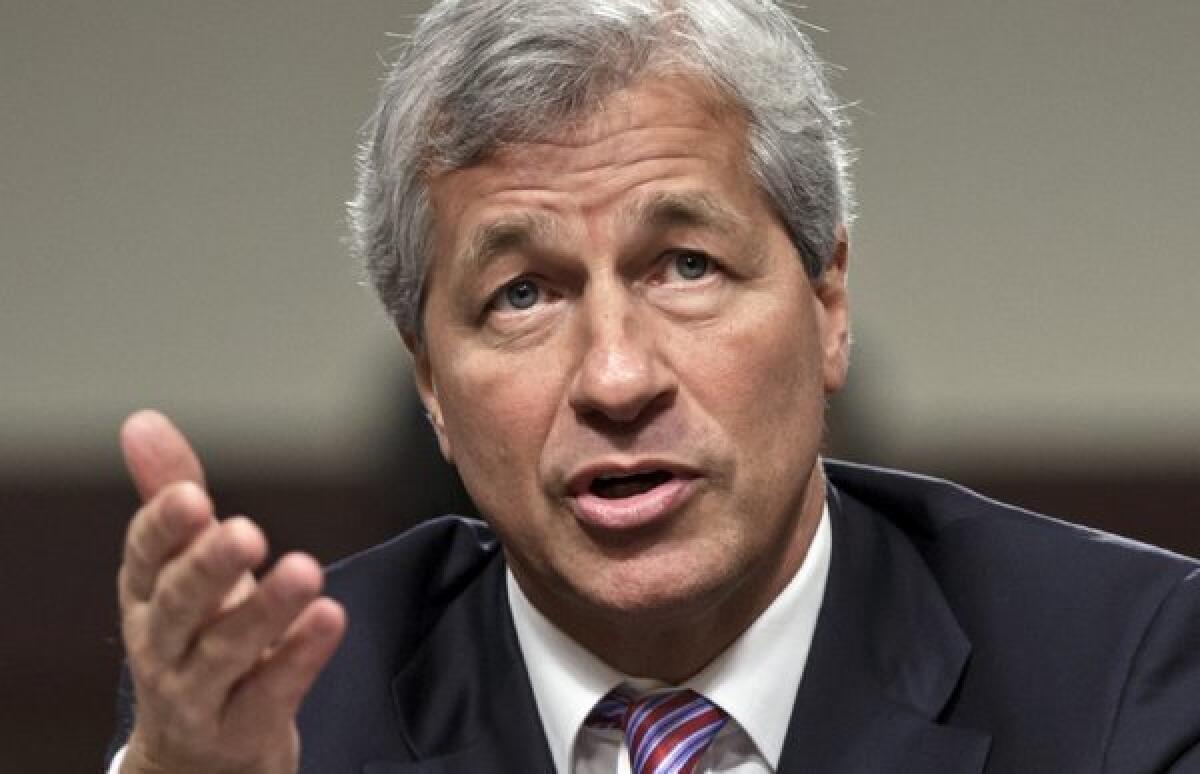JPMorgan faces the nuclear option

The giant investment bank can’t say it wasn’t warned.
In September, commenting on what appeared to be JPMorgan Chase & Co.’s consistent and intentional flouting of the rules governing its communications with regulators, Jon Wellinghoff, chairman of the Federal Energy Regulatory Commission, said he wasn’t all that impressed with Morgan’s excuse that its expensive corporate lawyers made a mistake.
“‘The dog ate my homework’ doesn’t work for me,” he said.
This week he showed just how unimpressed he was. Ruling in a case brought by California’s wholesale power system, FERC suspended Morgan’s right to sell electricity via power auctions for six months, starting next April 1.
The firm, which doesn’t own any generating plants in California but owns the right to trade power generated by some in-state plants, will still be able to sell that power in California -- but will have to accept a price that could be as low as its cost.
In other words, the FERC ruling could deprive Morgan of millions of dollars in profits for six months. That’s a big deal, likely to make the investment bank really ponder if it should have broken the rules in the first place. What’s more, this is the first time FERC has taken such a stringent action since it took the same action against Enron. But Enron then was already bankrupt; Morgan is still operating.
“This is definitely encouraging,” says Tyson Slocum, an energy expert at the Washington advocacy group Public Citizen, which has been pressing FERC to take a harder stand against misbehaving traders.
Morgan, for its part, says the penalty is overkill, considering that the issue at hand was “a dispute over document productions,” not Morgan’s “conduct in the market.” It’s worth noting, however, that the documents in question were requested by regulators in the course of their investigation of Morgan’s market conduct, which the California Independent System Operator contends may have been fraudulent. That investigation is still underway.
It’s also worth noting how ticked off FERC got. FERC had authorized the California ISO, which says it was the victim of possibly tens of millions of dollars in bogus bidding by Morgan, to collect documents and data from Morgan to help with its investigation.
Morgan kept claiming that the ISO had no authority to ask for the documents, even though FERC specifically told Morgan’s lawyers to fork them over. Morgan even misquoted a FERC regulation to support its position.
When this finagling was exposed, Morgan blamed its two high-priced law firms. It claimed that one of them forgot to tell the other that the document requests should be heeded. It apologized for the “inadvertent” flub.
FERC’s response is embodied in a 27-page order but can be boiled down to: “Now pull the other one.” It says Morgan’s excuse “lacks credibility” and points out that if every target of an investigation could weasel out of a penalty by pleading that it was its lawyers who made the mistake, no one would ever be brought to book for misrepresentations.
Wellinghoff may be signaling that FERC is embarking on a new era of scrutiny of energy traders. While its investigation of Morgan’s allegedly bogus California trading is continuing, FERC has drawn a line with giving regulators the runaround. Here’s the message, as Slocum sees it: “You lie to a federal regulator, then anything’s on the table.”
ALSO:
JPMorgan gives FERC the runaround
PUC dithers over crippled San Onofre nuclear plant
Morgan’s manipulation delivers a jolt to California energy consumers
More to Read
Inside the business of entertainment
The Wide Shot brings you news, analysis and insights on everything from streaming wars to production — and what it all means for the future.
You may occasionally receive promotional content from the Los Angeles Times.











